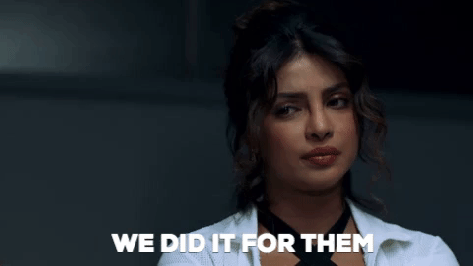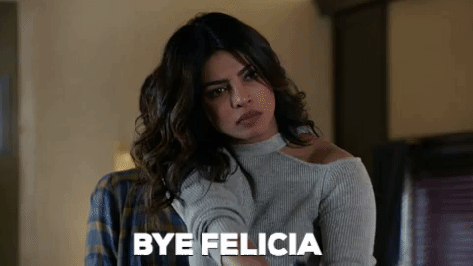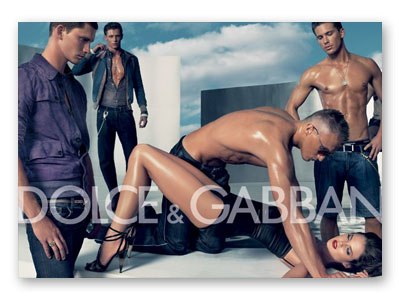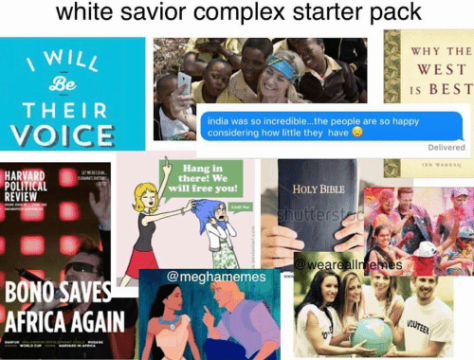As we near the start of the new year, the best films of the season are starting to be released and the buzz has begun. Oscar season is upon us, and with that, comes what seems to be a plethora of white stories. Nevertheless, I get sucked into the bubble every year, making it my goal to see every film nominated at the Oscars for best picture. This past weekend, A Star is Born (2018) was released, and as the media has made clear, it will be a top contender at the Oscars this year. It’s Lady Gaga’s acting debut, as well as Bradley Cooper’s writing and directorial debut. The publicity sucked me (and my boyfriend) right in! We saw the film in a crowded theater Saturday night, and I left in tears. But the more I reflected on the film, the more I was left with a bad taste. I knew the story coming in, but I still expected a stronger, independent female lead (Ally), and a less manipulative rock star (Jackson). In this essay, I will reflect on how A Star is Born employed stereotypes of submissive/dominant-female/male relationships, scopophilia, active/passive-male/female looking relationships throughout the film. I will also reflect on the lack of diversity, and the lack of awareness in the creation of the film.
A Star is Born (2018) is a remake of a film written in the 1930’s, remade three times (twice as films and once as a musical). The film revolves around Jackson Maine, a rockstar with an alcohol and drug addiction, who discovers a singer, Ally, and falls in love with her, while simultaneously starting her career. Ally eventually eclipses Jackson, and although they stay together, their relationship becomes complicated with Ally’s increase in fame and money, and Jackson’s decreasing celebrity and heightened addiction. They marry, and after an episode at the Grammy’s, Jackson enters rehab for his addictions. After coming home, Ally’s manager confronts him about his behavior, and he kills himself that evening. On its face, it’s an epic love story. Jackson is a tortured artist, reeling with the death of his parents when he was a child, and trying to deal with fame. Ally is a mousy woman, often told she’s too ugly to make, living at home with her dad who was an unsuccessful singer as well. Jackson and Ally found love with each other, but the complications of fame proved to be too much, and Jackson killed himself to spare Ally the future pain he would cause her. Ally, too in love with Jackson to hold him accountable for his behavior, stays with him and tries to please him for as long as she can. The last scene, when Ally sings a song Jackson wrote for her, at a memorial concert, was heart-touching and tear-jerking. Not to mention, the soundtrack of the film is simply amazing.
Although it was a well-made film and highly entertaining, I was disappointed. Ally was a submissive woman, manipulated and controlled by her partner Jackson, and her manager Rez. Jackson manipulated her emotions, inadvertently sabotaged her career, and expected Ally to clean up his messes and stay loyal to him. Her manager, Rez, controlled Ally’s career, dictating how she dressed, her makeup and hair, how she performed, and what she did in her relationship. Ally should have broken things off with Jackson the first night he disappeared on a bender, but she chose to stay with him. Knowing the advocate Lady Gaga is for being yourself and being a strong person, I was disappointed she took a role like this. Her character catered to the needs of men throughout the entire film. As a low-income woman like Ally, my oppositional gaze was triggered with her relationship with Jackson. I rooted for her, but it was for her to wake up and leave Jackson, rather than for her to be successful. As a Latina, I didn’t identify with anyone, except I saw my cousin in Ally’s gay Latinx best friend (and that’s because they’re literally twins).
There are several instances that employed scopophilia, which Mulvey discussed in “Visual Pleasure and Narrative Cinema.” When Jackson and Ally have the first conversation at a bar, she talks about how nobody will sign her because her nose is too big, and she’s ugly. Jackson replied that her nose is beautiful, he’s been staring at it all night. He then asks if he can touch it, and the two share an intimate moment where Jackson strokes Ally’s nose softly and slowly. Later, at the end of their first night together, Ally is walking inside to her house, and Jackson calls out to her from his car. He says “hey!” And Ally turns around to ask what he wants. Jackson replies: “I just wanted to get another look at you.” And Ally makes a motion to her nose, and walks inside. In both of these instances, Jackson is displaying scopophilia towards Ally, finding pleasure in looking at her (Mulvey, 30). Jackson’s interest in Ally’s nose is essentially erotic.
As a white woman, Ally employs a sense of being incomplete, throughout the whole movie. “The White woman evokes lack, loss, and absence” (Hollinger, 194). This quote refers to how white women are viewed by white men compared to black men. The quote applies to the film, because in the case of Ally, she lacks the looks and confidence to be a star, she loses Jackson at the end of the film, and her mother and Jackson are absent from her life throughout the film.
As I said before, this is the third film remake of this story, but Bradley Cooper did no better than the previous filmmakers in making it more inclusive, or less misogynistic. This film only had one lead female character, and there were two supporting men of color in the cast, with minusculeA parts and no character development. In “It’s Just a Movie: a Teaching Essay for Introductory Media Classes,” Smith argues that films are highly scrutinized, carefully constructed, and have huge political economies behind them that enforce their power, which means that everything about them has been thought out. The film is really just meant to be consumed and enjoyed, but there are so many problems behind it. I question why this film couldn’t be better for women or people of color? There was talk that Beyonce had originally been linked to play Ally, but why wasn’t she in the final cast? Instead of a film about a white, dominant-submissive couple, couldn’t there be another story told?
Sources:
Hollinger, Karen. (2012). “Feminist Film Studies and Race.” In Feminist Film Studies, 194.
Mulvey, Laura. (1975). “Visual Pleasure and Narrative Cinema.” Screen 16(3), 30.
Smith, Greg. (2001). “’It’s Just a Movie”: A Teaching Essay for Introductory Media Classes.” Cinema Journal 41(1), 127-134.











